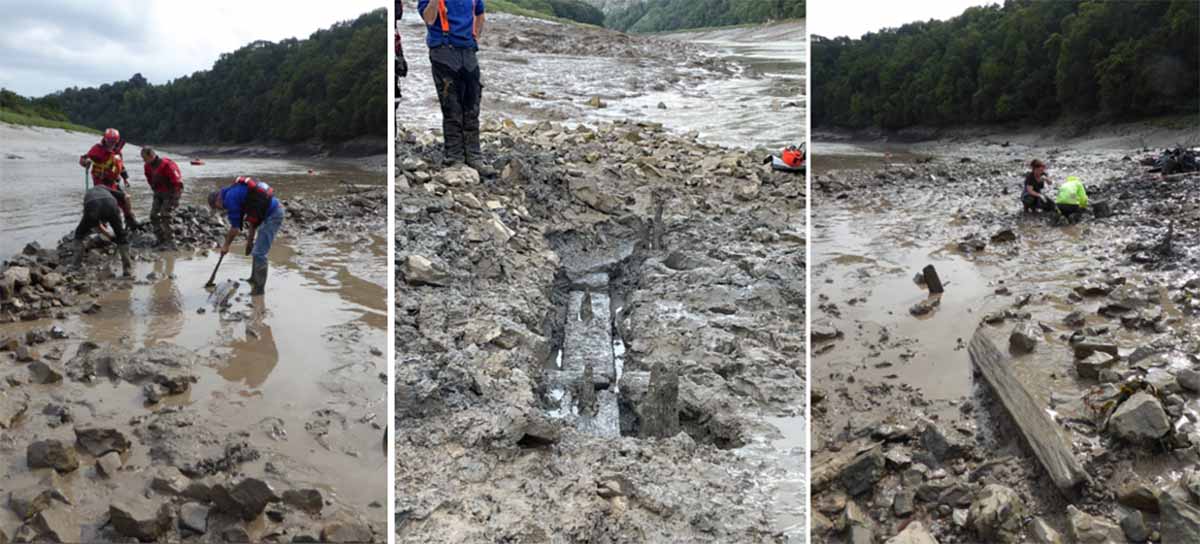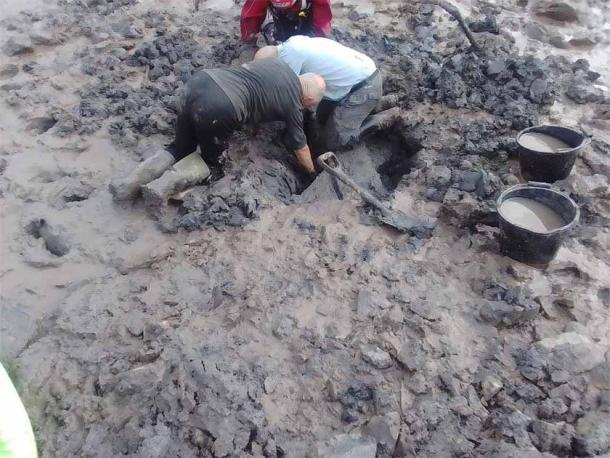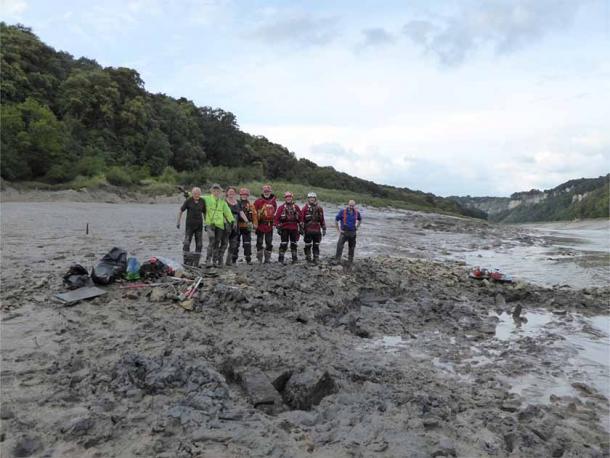A bridge connecting past and present – in this case the ancient past, has been found crossing the River Wye at Chepstow in the UK, often called the ‘gateway to Wales’. Archaeologists made the find while digging for evidence in the shadow of the 950-year-old Norman castle on a muddy riverside bank. Due to an ‘extreme low tide event’, they located the well-preserved remnants of what is thought to be a 2,000-year-old Roman built structure, likely a pier.

Stumbling Upon ‘Upright Timbers’: Muddy Business
John Davies, a representative from the Chepstow Archaeological Society, mentioned their initial skepticism to The Forest Review:
“At first, we weren’t sure what we’d stumbled upon. But as the excavation progressed, the pieces of the puzzle started coming together…We believe we’ve found a crossing that predates the existing Monmouth and Chepstow bridges, likely used by the Romans.”
Simon Maddison, also of the Chepstow Archaeological Society (CAS) added:
“The team were able to locate upright timbers in a tidal pool on the location of the Roman crossing. Until the results come back, we won’t know for sure the period of the structure. We are thrilled with what we were able to achieve and await dating results with keen anticipation.”

Two of the timber remnants, thought to be from a Roman crossing of the River Wye, between what is now the border of England and Wales. (Simon Maddison/CAS)
The ancient wooden structure was believed to have been a link between England and Wales, long before these two countries took their modern forms, connecting a route upstream of Chepstow, to the village of Tutshill in Gloucestershire. It served as a vital link between these regions for centuries, long before modern transportation networks existed.
It was chanced upon by the Chepstow based archaeology team due to a fortuitous 2 hour ‘extreme low tide event’. Due to the tidal event, these ‘upright timbers’ were located in a tidal pool just off the riverbed, reports The Forest Review.
“Excavating around these we were able to expose very substantial timbers and beautiful joints that are probably part of an original pier and cutwater. We took timber samples for dendrochronological and possible Carbon-14 dating, but until the results come back, we won’t know for sure the period of the structure,” added Maddison.

The excavators digging into the muddy silt to reveal the timbers. (Simon Maddison/CAS)
Members of the Severn Area Rescue Association (SARA) lent their expertise to assist the team, utilizing mud stretchers brought to the site by boat to safely transport personnel down the steep riverbank. “The mud was very dense and very sticky, and we frequently got stuck in it. Without SARA it would have been impossibly dangerous,” explained Maddison.
Interestingly, this crossing had been discovered and partially excavated back in 1911 by Dr. Orville Owen, a pioneer in the field of archaeology. Although it also appeared on an old Ordnance Survey map from that era, it had remained buried in mud, its precise location a mystery until now, reports The Daily Mail.
SARA Beachley posted photos of the muddy dig, saying:
“Something different last Friday! A small SARA team provided safety cover and other muddy assistance to a group from the Chepstow Archaeological Society, investigating the site of the Roman bridge across the Wye just above Chepstow Castle. With amazing results, as these photos show!”

Some of the SARA crew and the Chepstow Archaeological Society at the site of the find. (Simon Maddison/CAS)
Chepstow: History Linking Pre-Historic, Roman, and Anglo-Saxon Periods
Notably, a bridge known as “The Old Wye Bridge” was later constructed in proximity to the 950-year-old Chepstow Castle. This bridge, built in 1816 using cast iron and stone, has earned the prestigious Grade I listed building status.
Chepstow’s history can be traced back to ancient times. Archaeological evidence suggests that the area was inhabited during the prehistoric period, with various ancient fortifications and settlements in the region.
During the Roman era, Chepstow was an important settlement known as “Isca Silurum.” The Romans built fortifications in the area, and it served as a key point along their road network. After the Roman era, the Anglo-Saxons and Vikings left their mark on Chepstow, before being conquered by the Normans in the 11th century.
The construction of Chepstow Castle in the late 11th century by the Norman lord William FitzOsbern marked the beginning of the town’s transformation into a strategic stronghold, which it remains even today.